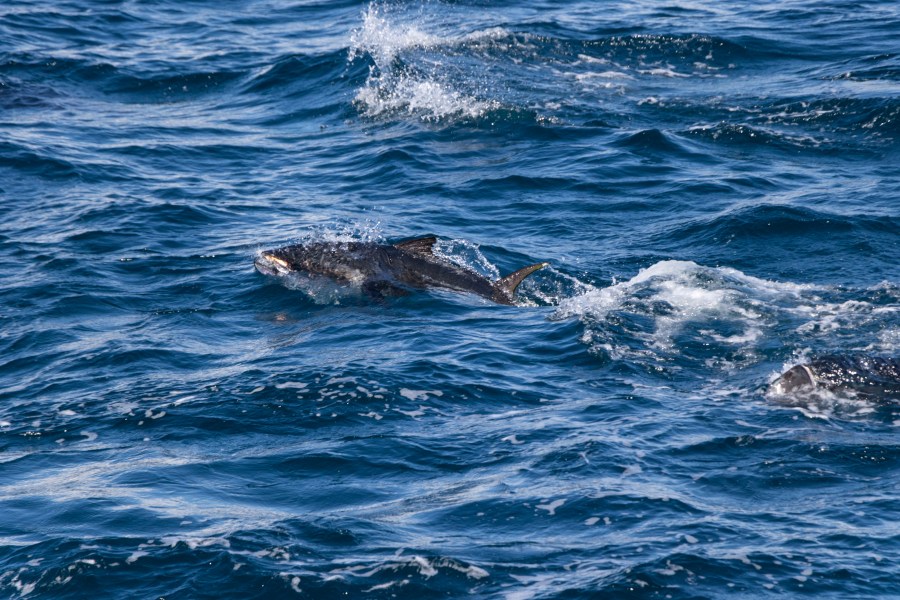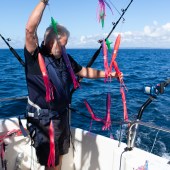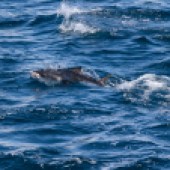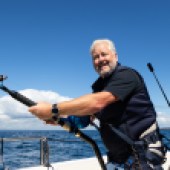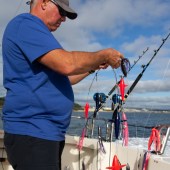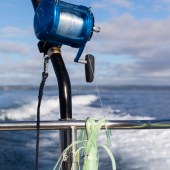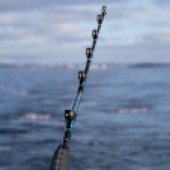Katy Davidson reveals the excitement around the return of bluefin tuna to UK waters and what the reappearance of these fish means for coastal communities, both human and piscine.
Talk of big game fishing today and that usually brings to mind gleaming boats with complex spreads of rigging cruising through the sapphire blue waters of the Florida Keys, with huge, silvery beasts of the sea being landed as anglers pose alongside their quarry with wide grins.
One doesn’t perhaps immediately think of Scarborough in the UK. Yet in the 1930s this North Sea neighbour to the famous fishing port of Grimsby was a place visited by wealthy and distinguished adventure seekers all in the pursuit of one thing – the Atlantic bluefin tuna. The annual appearance of these fish near the shores had international elites flocking to the Yorkshire town.
While these huge pelagics – with a reputation for being one of the strongest and finest game fish in the world – were the draw for these anglers, a more diminutive quarry was also a factor behind their summer arrival. The annual migration of herring and sardines drew both the bluefin tuna and the commercial fleet of the North Sea. And those herring boats played a key role in getting the bluefin tuna anglers out to the fishing grounds. It led to a feeding frenzy for all involved.
Then in in the 1950s that frenzy ended abruptly when the tuna disappeared.
So why did they go and now why, today – equally importantly – are bluefin tuna back in UK waters?
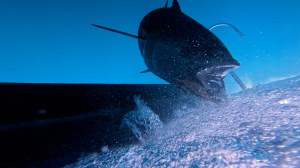
First thoughts for the reasons behind the decline will inevitably turn to the effects of climate change. Modern day sightings of bluefin tuna along our shores – as well as much rarer occurrences of swordfish and bottlenose dolphins – might support the theory that warmer waters are the reason. But that doesn’t explain the proliferation in the 1930s-1950s…or their quick departure. Also, herring and sardines are the main diet for these fish and were fished heavily at that time.
Another theory debated is a natural phenomenon, not yet widely understood, described as Atlantic Multi-Decadal Oscillation, where the sea surface temperature varies over multiple decades. This natural cycle is considered to be connected with shifts in hurricane activity, rainfall patterns and intensity, and changes in fish populations.
But the blunt truth is that at this point we do not 100 per cent understand the reasons behind the changes in proliferation of bluefin tuna.
To attempt to find answers, the UK Bluefin Tuna Association (formerly Bluefin Tuna UK) campaigned successfully to establish and deliver the highly successful CHART Bluefin Tag and release research programme in England, Wales, and Northern Ireland in partnership with CEFAS (the Centre for Environment, Fisheries, and Aquaculture Science).
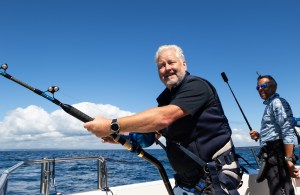
The beauty of this project was that participation in the catching and releasing of fish was offered to the public once the skippers and crew were trained and licensed. This was a rare occurrence where citizen science and sports fishing met.
This meant that for the first time since the 1950s, anglers were legally able to catch bluefin tuna, yet also contribute to a valuable scientific research project. Results of the data are not yet fully compiled but the benefits to the skippers, crew, ports, harbours, hotels and restaurants where these charters were offered has been very clear.
In 2021 the economic impact from CHART anglers was estimated at around £800,000. This kind of financial benefit means a catch and release business could continue to grow and attract a clientele who want to go fishing for the bluefin tuna, with all the added benefits for the communities where the charters take place.
One real life example where this is happening is Mylor in Cornwall, where Steve Porter skippers for up to four clients at a cost of £1,200 a day. And, of course, those same clients frequent the local pubs, restaurants and accommodation.
I took a trip with Steve to discover for myself what happens on these expeditions. Matters start early in the morning aboard a well-equipped boat where he and his crew set up a spread of rigging and rods with colourful squid-like lures and specialist reels and lines. Once out on the water, using cues from wildlife such as birds gathering and diving on a patch of sea; a tuna ‘bust’ is spotted as the water foams with activity.
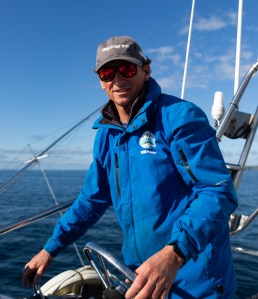
Manoeuvring the boat towards the action, more often than not there’s a strike and the reel screams out as the fish races away, at which point all the other gear is pulled in and the angler gets on the rod. To those who wonder if they’re capable of hauling in a bluefin tuna, Steve has had youngsters from the age of 14 to veterans of 82 successfully achieve this.
When the fight is done and the fish is alongside the boat, the CEFAS-trained team measures and tags the fish before towing it beside the boat to reoxygenate it before its release.
These trips offer anglers a unique day which switches between adrenaline-fuelled battle and cruising on the seas, often with friendly dolphins alongside, much like a trip off the aforementioned Florida Keys.
This year, small scale commercial bluefin tuna fishing has been announced for the UK with a quota of 39 tonnes to assess the benefits and sustainability of allowing it to take place. This is currently licensed to only ten vessels with rod and line fishing.
To prevent a feeding frenzy that eliminated bluefin tuna in our waters in the last century, it’s probably worth knowing that although bluefin tuna still sometimes sell for up to £2million per fish in Japan, that is only the highly specialist landings for the sashimi trade at a ceremonial New Year fish auction in Tokyo, considered as more of a marketing stunt and expression of status than the true market value of the fish. The reality here is that one 200kg fish will sell for around £2,000, making it cheaper than pollock!
Ideally, a carefully managed catch and release fishing business could herald more of those gleaming sports fishing boats with their outriggers, targeting bluefin tuna with a view to carefully harvesting quality over quantity and providing restaurants and local communities with exceptional sashimi grade fish from our own local waters whilst ensuring that – as stated by the UKBFTA – now the tuna are back, let’s give them a future.
ukbfta.co.uk; atlanticbluefin.co.uk
DID YOU KNOW…? 5 BLUEFISH TUNA FACTS
- Unlike other fish, Atlantic bluefin tuna (Latin name thunnus thymus, derived from the Latin ‘thyno’, meaning ‘to rush, to dart’) can raise their own body temperature, allowing them to hunt in colder water quicker and more intelligently and dive as deep as 3,000ft.
- They need to keep moving to keep ‘breathing’. Just like sharks, they need a constant flow of water over their gills to oxygenate and will sometimes swim with their mouths open to increase oxygen flow.
- Their eggs hatch just two days after being fertilised, making them a highly successful breeding fish.
- They epitomise the word ‘streamlined’ with pectoral fins that retract into slots in the sides of their bodies, allowing them to reach speeds of over 40mph.
- The gills of bluefin are huge in relation to their size, ten times larger than those of rainbow trout (kg for kg). They are also incredibly thin. This huge surface area allows them to extract 50 per cent of the oxygen present in the water.

